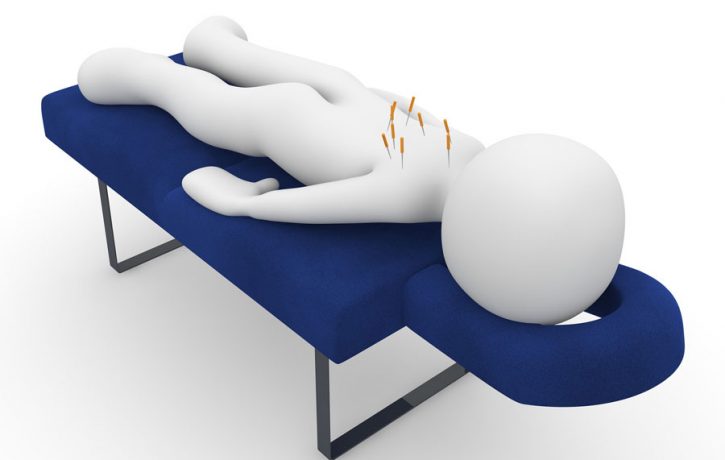in Acupuncture
Dry Needling and It’s Use in the Clinic

Recently I attended a two day course in Hertford to learn how to apply dry needling, a form of acupuncture, around different areas of the body. Acupuncture itself is a very in depth type of therapy and to perform it from every angle you would need to go to university for up to 4 years.
What is Dry Needling?
Dry needling is a technique similar to acupuncture that is primarily used for trigger points and general aches and pains. It involves very thin needles (as thin as 0.18mm, less than one fifth of a millimetre!) which penetrate the soft tissue but very differently to injection needles. Hypodermic needles are hollow and much thicker, as they extract fluid from the body. The tip also has a cutting edge whereas the dry needle is rounded and flexible, so it is much less likely to draw blood or cause any bleeding/bruising under the skin. They do however cause micro-inflammation which is the desired affect. As the needles inflame an area on a small scale, they attract such chemicals as calcitonin and nitric oxide which act as healers and relaxers to a muscle. In Laymans terms dry needling can help de-stress both physically and psychologically, and release trigger points/spasms within a muscle. In some cases it can also accelerate healing of an injury such as an Achilles strain. Dry needling is of course avoided on inflammatory injuries so not to further aggravate the issue however.
Does Dry Needling hurt?
Pain is a very relative topic. It can vary from one person to the next as we all perceive pain in different ways, but for the most part, yes dry needling will have an element of pain but no more so than a sports massage if not much less so. By applying pain however, the body once again has a chemical reaction by sending opioids (morphine like chemicals) to the site to desensitise the pain. Dry needling for that reason once concluded can help to reduce pain in a sore area. In fact using dermatological knowledge, a therapist can desensitise an area without even applying needles into that site, but just following the neural pathway into another area of the skin. It’s a way of distracting your brain from the injured area and focus on the pain from the needle instead.
It’s worth noting that if you have a high level of dry needling in one session, your body can respond in a calming affect that will even aid in sleep disorders. The opioids released into your muscles due to initial pain felt help to relax you, reduce pain, de-stress and as a result can make you feel tired or drained. It’s wise to consider what time in the day you book an appointment if this is the planned treatment.
Are there any reasons not to have it?
Dry Needling can help with a variety of conditions, such as:
- Aching calves
- Aching shoulders
- Back pain
- Shoulder pain
- Muscle tightness
There are a number of reasons you may not be able to have any form of acupuncture. The most common is having a needle phobia. If you have a phobia then you are likely not to relax during treatment, have a heightened sensitivity to pain, and therefore have the opposite effect hoped for. Here’s a small list of other cautions and contraindications:
- Unable to give consent
- Open wound
- Lymphodema
- Recent joint replacement (needling on the site)
- Aneurysm
- Nerve impingement
- Diabetic
- Pregnant (needling around the trunk)
- Epilepsy if not under control
Is dry needling likely to take up a whole appointment?
Dry needling would be most effective alongside other treatment methods. Needling alone has its positives, but it’s much more beneficial with other rehabilitation. It of course depends on the injury how to approach it but more often than not it will always involve range of movement and forms of stretching. A session specifically on dry needling would likely be no longer than 20 minutes, and if that’s something you’d want to look into, I would advise speaking with your therapist directly and work out what you’d like to achieve.
- What’s Your Weakness? - 7th February 2019
- Taping and Strapping Vlog – How does Kinesiology tape work? - 26th October 2018
- Are Regular Treatments Worth It? - 14th September 2018
